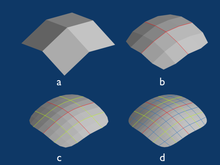Introduction to Finite Element Method (FEM)
Finite Element Method Meshing : In the vast universe of engineering and scientific computation, the Finite Element Method (FEM) stands out as a shining star. It's a powerful technique used to solve complex physical problems by subdividing them into smaller, more manageable elements - a process known as meshing. But why is meshing so crucial in FEM? Imagine trying to solve a jigsaw puzzle. The smaller the pieces, the more detailed and accurate the picture. Similarly, in FEM, the way we break down the problem - our 'mesh' - determines how well we can understand and solve these intricate puzzles of the physical world.
Fundamentals of Meshing in FEM

Meshing, at its core, is about creating a network, or a 'mesh', of elements over a domain to analyze a physical phenomenon. This mesh can be made up of various types of elements: lines (1D), triangles or quadrilaterals (2D), and tetrahedrons or hexahedrons (3D). Each element type has its unique advantages and is chosen based on the complexity and requirements of the problem at hand.
Mesh Generation Techniques

Mesh generation can be a manual or an automated process, each with its strengths. Manual meshing allows for customized, precise control, perfect for complex geometries. On the other hand, automatic meshing, powered by advanced algorithms, offers speed and efficiency, especially beneficial for large or less complex domains.
Key Considerations in Mesh Design
When designing a mesh, size matters. Smaller elements provide more detail but increase computational load. It's a delicate balance. Also, mesh refinement - adding more elements where needed - is crucial for accuracy, especially in areas where the physical phenomena show rapid changes.
Types of Mesh: Structured vs. Unstructured
Meshes come in two main flavors: structured and unstructured. Structured meshes are orderly and grid-like, offering simplicity and ease of computation. Unstructured meshes are more random and flexible, ideal for complex, irregular geometries. Each type has its place, and choosing the right one is key to a successful analysis.
Advanced Meshing Techniques
Enter the world of advanced meshing, where techniques like adaptive meshing dynamically refine the mesh during analysis, offering higher precision. For truly complex geometries, high-performance meshing tools create highly efficient meshes that can handle intricate details with ease.
Common Challenges in FEM Meshing
Meshing isn't always a walk in the park. Handling complex geometries, like those found in biomedical applications or aerospace, can be challenging. Additionally, finding the sweet spot between accuracy and computational efficiency requires skill and experience.
Impact of Mesh Quality on FEM Analysis
The quality of your mesh directly impacts the accuracy of your FEM analysis. Poor mesh quality can lead to incorrect results, misleading conclusions. It's vital to use tools and techniques to assess and ensure mesh quality throughout the analysis process.
Software and Tools for FEM Meshing
The market is brimming with FEM software, each with unique meshing capabilities. From industry giants like ANSYS and ABAQUS to open-source options like FreeCAD, each offers a range of tools suited for different types of problems and levels of complexity.
Case Studies: Meshing in Action
Real-world examples bring to life the power of effective meshing. From designing safer vehicles to understanding geological formations, meshing plays a pivotal role. These case studies not only showcase the versatility of FEM meshing but also serve as a treasure trove of best practices and lessons learned.
Future Trends in FEM Meshing
The future of FEM meshing is bright, with innovations in automated and AI-driven meshing techniques on the horizon. These advancements promise to make meshing faster, more accurate, and accessible, further expanding the potential of FEM in various fields.
Conclusion
Meshing in the Finite Element Method is more than just a step in the process - it's the foundation upon which accurate, reliable analysis is built. As technology advances, so do the tools and techniques for meshing, offering ever-greater insights into the complexities of the physical world. For practitioners in engineering and science, mastering meshing is not just beneficial - it's essential.
FAQs
- What is the best type of element to use for FEM meshing? The choice of element type depends on the specific requirements of the project, including the complexity of the geometry and the type of analysis being conducted.
- How do you determine the right mesh size? The right mesh size balances accuracy with computational efficiency. It often involves iterative testing and refinement to ensure the mesh is fine enough to capture the necessary details but not so fine that it becomes computationally prohibitive.
- Can mesh quality affect the outcome of an FEM analysis? Absolutely. High-quality mesh leads to more accurate and reliable results. Poor mesh quality can introduce errors and lead to misleading conclusions.
For help in modelling in any FEA, FDTD, DFT Simulation / Modelling work, you can contact us (bkcademy.in@gmail.com) or in any platform.
Interested to Learn Engineering modelling? Check our Courses?
check out our YouTube channel
u can follow us on social media
Share the resource
-.-.-.-.-.-.-.-.-.().-.-.-.-.-.-.-.-.-
© bkacademy
